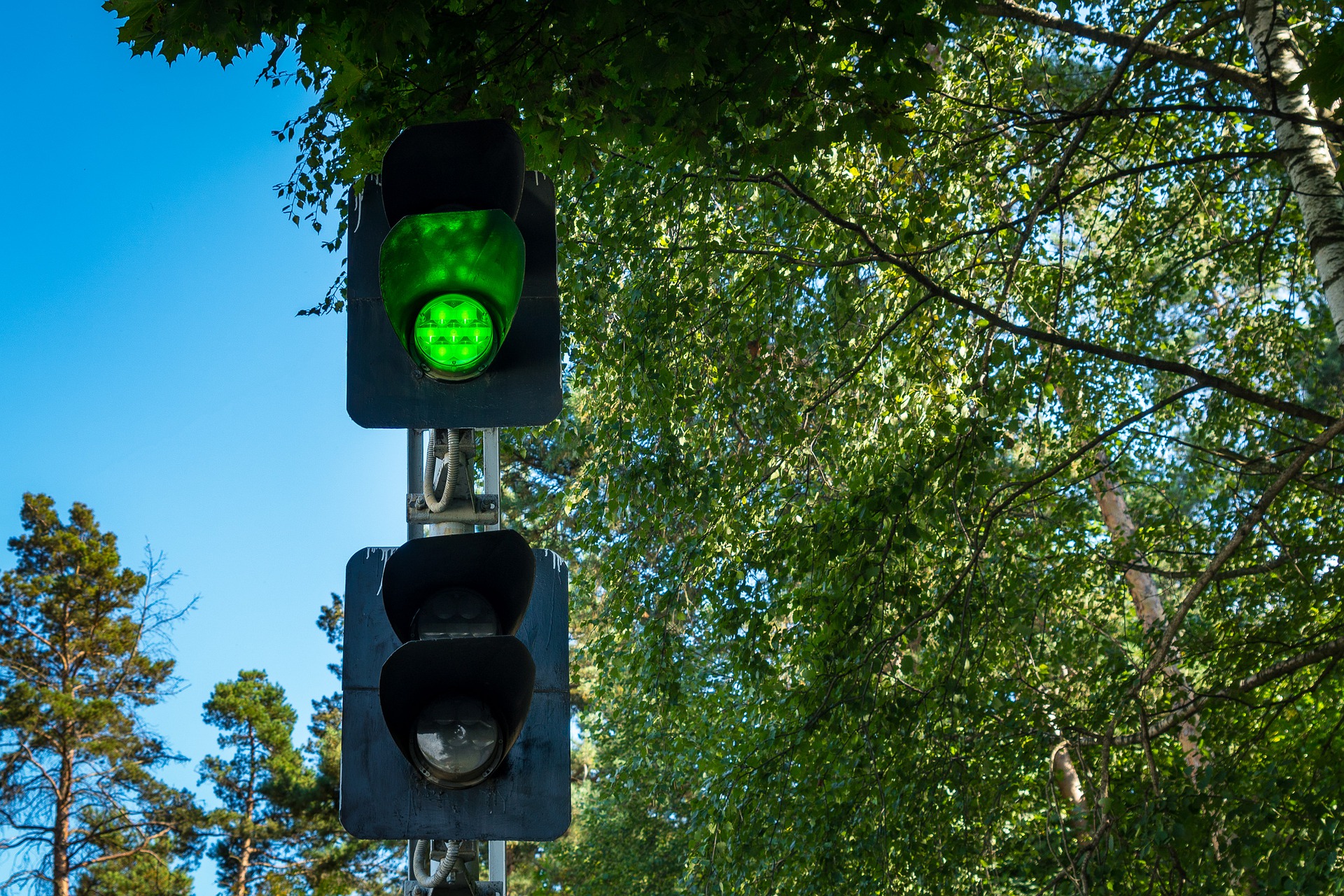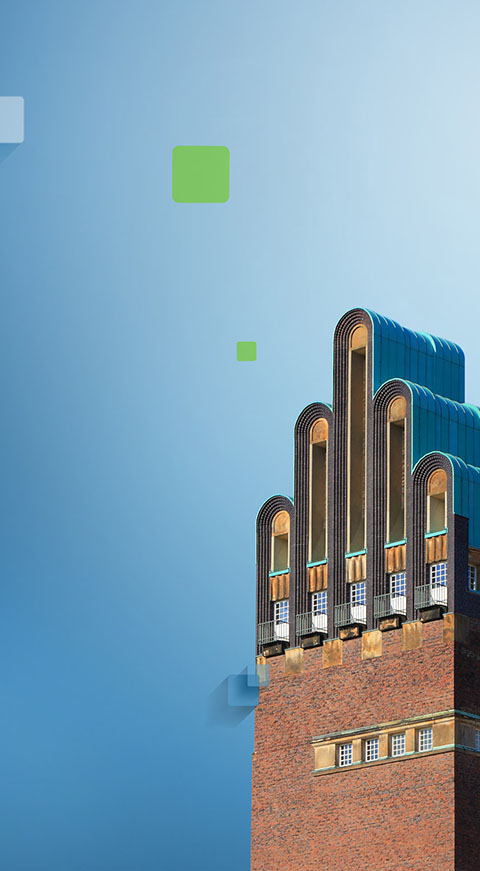
Within the framework of the DAnalytics project (Advanced Analytics for Science City Darmstadt – Darmstadt Analytics), Darmstadt is developing and installing a so-called ‘traffic light phase assistant’ over the next nine months. This assistant generates real-time traffic data and informs road users via an app about the optimum travel speed for a green wave. The system uses the Signal2X app to provide public transport, car drivers and cyclists with the recommended travel speed for a green wave as part of a real-world laboratory for cooperative traffic management.
‘If more cars, public transport and bicycles drive on the green wave, fewer drivers will have to brake and start again at traffic lights. As stop-and-go situations are responsible for a large proportion of traffic emissions, the traffic light phase assistant helps improve air quality in cities and thus protect the environment,’ explains Head of Transport Michael Kolmer. ‘In addition, the data from the traffic light phase assistant is permanently fed back to the DAnalytics analytical platform. They are available there as a database for the central traffic computer in real time and for traffic planning, enabling active, environmentally sensitive traffic management that also improves the quality of life in the city,’ says Kolmer.
The traffic light phase assistant uses intelligent algorithms to calculate the optimum speed for travelling on the green wave. According to the provider, the predictions are up to 99.8 per cent reliable. A quality factor that incorporates current conditions and sudden events into the calculations helps to assess reliability. In the future, drivers, cyclists, buses and trams will receive the green-time forecasts in real time via the Signal2X smartphone app. This is currently available free of charge for smartphones with iOS and Android operating systems in the App Store. In the future, for the first time in Germany, Signal2X will also be available for Apple CarPlay and Android Auto. In the long term, the speed recommendations will not only be available via the app, but also be integrated into common navigation systems via a cloud system.
Based on Darmstadt’s Green City Plan, digital traffic management has been gradually and modularly expanded since 2018 with an environmentally oriented, proactive overall concept for real-time traffic control. In addition to investments in tailor-made traffic technology, especially in sensors and cameras, citizens should be provided with traffic-relevant information – via apps, for example. A solution for planning personal mobility in real time is therefore being developed and tested in the first half of 2023.
Based on Darmstadt’s Green City Plan, digital traffic management has been gradually and modularly expanded since 2018 with an environmentally oriented, proactive overall concept for real-time traffic control. In addition to investments in tailor-made traffic technology, especially in sensors and cameras, citizens should be provided with traffic-relevant information – via apps, for example. A solution for planning personal mobility in real time is therefore being developed and tested in the first half of 2022. Since the beginning of 2018, the DAnalytics project has been one of the most innovative projects in the field of environmentally sensitive traffic management in Germany and forms the basis for sustainable and low-emission mobility in Science City Darmstadt. To this end, a specialised project team has also been set up in the Mobility department. The aim of the project, which is funded by the German Federal Ministry of Transport and Digital Infrastructure (BMDV), is to exploit the possibilities of big data analytics in the field of traffic management, so that both road users and the environment benefit equally. The focus is on reducing pollutant emissions from transport, in particular nitrogen oxides. One of the most important project goals is therefore the creation of a data-driven traffic management system in real time, which, on the basis of the latest figures, data and facts of the city of Darmstadt, creates the basis for event- and environment-oriented decisions regarding traffic management. It also considers the emission-oriented improvement of the modal split at the individual hubs as well as an active reduction of total emissions from fossil-fuelled means of transport. In addition, the aim is to obtain a holistic, network-oriented understanding of traffic in Darmstadt, as a basis for long-term traffic planning, mobility management, logistics management and parking management, among other things. In Nieder-Ramstädter Straße, a real-world laboratory for cooperative traffic control, also funded by the BMDV, has been set up in which, for example, the optimisation of public transport and traffic flow is simulated and tested. The project involves installing smart sensors and intelligent traffic technology that generate real-time traffic data and develop effective traffic control measures on the basis of this data. In Nieder-Ramstädter Straße, the components will be tested in a cooperative real-life laboratory (public transport/car/bike/pedestrian traffic) until autumn and then implemented throughout the entire city area. A key element of the overall measure is the new multimodal traffic light phase assistant.
Michael Kolmer, head of Transport of Science City Darmstadt: ‘With DAnalytics, we are complementing our overall concept for digital traffic control, which is geared towards the benefit of citizens. Our focus is not only on public transport and bicycle traffic, but also on pedestrians and people in their own vehicles. With this equal and multimodal approach, it will be possible to avoid pollutants, reduce driving times for all road users and, at the same time, advance climate protection. The traffic light phase assistant makes this approach tangible for people and enables them to make their own contribution to the mobility revolution.’
Katharina Metzker, head of the Mobility department and project manager for the two Green City innovation projects adds: ‘With smart technologies such as the traffic light phase assistant, we want to encourage drivers to behave in an environmentally sensitive manner and to make mobility in our city more sustainable and efficient, together with all stakeholders in the transport ecosystem. Our project team, together with the Mobility department as a whole and external partners, is investing a lot of time, personal commitment and passion in this.’
The implementation of the project objectives is based, on the one hand, on the measures already developed in the Darmstadt Green City Plan (Master plan – measures and package of measures to reduce NO22pollution of 31 July 2018) and, on the other, on the derived findings of data-driven, active and environmentally sensitive traffic management (AUVM), the development and building up of which are at the heart of this project.

